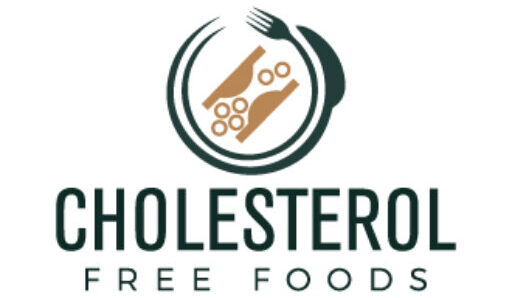High Blood Cholesterol: And How To Control It With Food
Cholesterol is a waxy, fat-like substance. It is found in every cell of the body and is needed to manufacture elements such as hormones and vitamin D to digest food. Animal foods contain cholesterol, although the liver naturally produces everything the body needs. Cholesterol is necessary for cell membranes, but when there is too much cholesterol in the blood, it forms plaque that adheres to the walls of blood vessels. This buildup is known as atherosclerosis and can lead to coronary heart disease, heart attack or stroke.
High cholesterol is a condition in which the blood has too much of certain undesirable fats or lipids. It is usually caused by lifestyle factors, such as diet, combined with genes inherited from parents. Less commonly, it is caused by other diseases or certain medications.
You may be diagnosed with high blood cholesterol if you have persistently high levels of bad blood cholesterol on a routine test called a lipid profile. To treat high blood cholesterol, your doctor may recommend lifestyle changes for a healthy heart, such as eating a healthy diet, quitting smoking, or maintaining a healthy weight. Your doctor may also prescribe medications, such as statins, to lower and control high cholesterol.
If left untreated, high cholesterol levels in the blood can lead to plaque, or atherosclerosis, in your blood vessels. The formation of plaque increases the risk of heart attack, stroke and peripheral artery disease.
Explore this health topic to learn more about high blood cholesterol levels, the role of NHLBI in research and clinical trials to improve health, and where you can find more information.
High cholesterol: What foods can we eat?
Cholesterol is a waxy, fat-like substance. It is found in every cell in the body and is needed to make hormones, vitamin D, and other elements to digest food. Pet food contains cholesterol, although the liver naturally makes everything the body needs.
Cholesterol is necessary for cell membranes, but when there is too much cholesterol in the blood, plaque forms and sticks to the walls of blood vessels. This buildup is known as atherosclerosis and can lead to coronary heart disease, heart attack or stroke.
Diet is the key to maintaining healthy levels of cholesterol factor. Experts believe that choosing foods high in cholesterol can play a big role in maintaining cardiovascular health.
Is cholesterol good or bad?
There are two types of cholesterol, each based on the type of protein carried in the blood. LDL deposits cholesterol throughout the body. It is this type of cholesterol that builds up and is better known as “bad cholesterol” (LDL).
On the other hand, high-density lipoprotein (HDL) captures cholesterol in the arteries; it then brings it back to the liver to be eliminated. This is why it is called “good cholesterol”.
How do I know if I have cholesterol?
According to the U.S. National Library of Medicine, large deposits of cholesterol in the arteries can cause them to burst and form blood clots. The clots, in turn, block blood flow to the coronary arteries, so the risk of chest pain and heart attack is high. To find out if a person has high cholesterol, a blood test is required.
These tests can be applied to children as young as 9 years old. For young adults, it is recommended that they be done every 5 years; for those over 45, every 2 years.
What are the causes of high cholesterol in the body?
Lack of physical activity, smoking, and healthy eating habits are the main causes of high cholesterol. Although genetics, age and weight can all play a role, experts say that a poor diet is the most common cause. That is why a dietary approach must be used to counteract it. Foods that cause high cholesterol levels in the body are fats and trans fats.
When it comes to fats, there are saturated fats and unsaturated fats. The former are found in meat and dairy products; they produce more bad cholesterol in the liver. Unsaturated fats, on the other hand, are found in fish, vegetables, nuts and other seeds, legumes, and oils. Some of this help increase the rate at which the liver reabsorbs and breaks down bad cholesterol.
Trans fatty acids come from the process of artificially solidifying oils. They can be found in fried, baked or packaged foods. They are considered to be the most harmful because they raise bad cholesterol and lower good cholesterol.
In fact, since 2013, the Food and Drug Administration (FDA) no longer recognizes partially hydrogenated oils as safe and as a major source of Tran fats. And since 2018, some sites in the United States have banned their use.
How can I lower my cholesterol?
Since high cholesterol levels are the cause of other complications, as mentioned above, it is important to make lifestyle changes to lower cholesterol levels. Weight control and regular exercise are two important actions, but the most essential is a healthy diet.
Foods recommended by the American Heart Association include those that contain soluble fiber, so it binds and helps remove cholesterol from the blood. Examples include: salmon, trout, albacore, sardines; nuts, legumes, natural vegetable oils, oats, chia, beans and barley. Lean meats and low-fat dairy products can also be eaten.
Foods that should be avoided or eaten in small amounts include
- Poultry meat with skin.
- Foods containing butter.
- Dairy products made from whole milk.
- Saturated vegetable oils, such as coconut oil or palm oil.
- Fried foods.
- Flour
- Products based on partially hydrogenated or hydrogenated vegetable oils.
Finally, it is recommended to drain fat in a strainer while cooking; to roast or cook meat instead of frying it; to remove the fat layer from broths and soups; and to balance the variety of foods.
By combining a good diet, exercise and regular check-ups, you can lower your cholesterol levels and your risk of heart or coronary heart disease.








